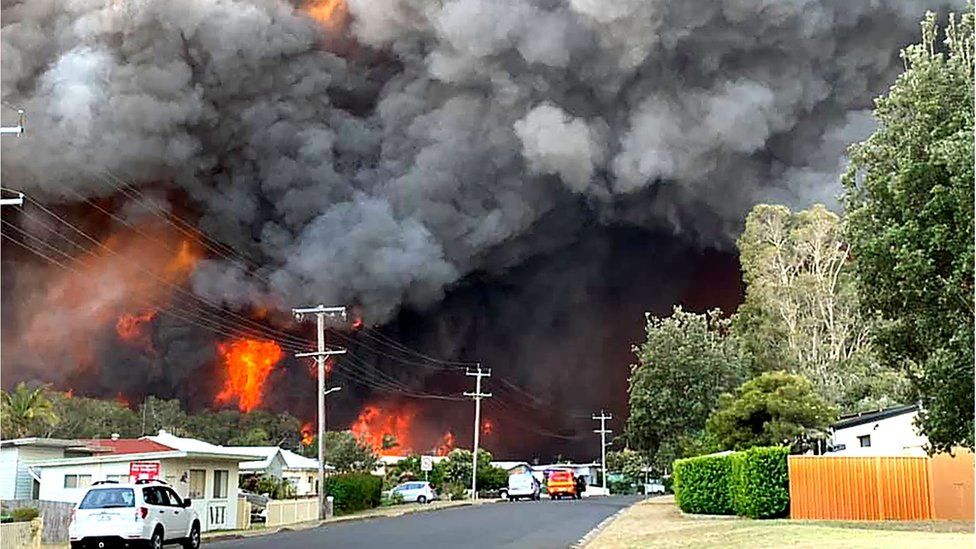Beyond Conformity: Enhancing Home Safety with a Thorough BAL Report Evaluation
Beyond Conformity: Enhancing Home Safety with a Thorough BAL Report Evaluation
Blog Article
Exactly How BAL Record Impacts Shrub Fire Defense Measures
In the world of bush fire protection, the Building Strike Level (BAL) report stands as an essential tool that substantially influences the security and resilience of residential properties in fire-prone locations - BAL Report. The effect of a BAL assessment expands far past simple paperwork; it acts as the keystone for figuring out the suitable construction standards and fire protection actions needed to minimize the risks postured by bushfires. As areas face significantly severe fire periods, comprehending how the BAL report forms these safety steps becomes paramount for contractors, homeowners, and policymakers alike
Understanding the Bushfire Attack Level

Value of BAL Record Assessment

Additionally, the BAL report analysis serves as a foundational action in adhering to legal obligations and requirements connected to bushfire protection. Neighborhood councils and authorities typically mandate the entry of a BAL record as component of the planning and structure authorization procedure to make certain that homes are effectively secured against bushfire risks. Falling short to perform a complete BAL record assessment can cause inadequate security procedures, leaving residential properties prone to devastating bushfire occurrences.
Construction Requirements Based Upon BAL
An extensive understanding of the Bushfire Strike Level (BAL) allows residential or commercial property proprietors to carry out building and construction standards tailored to their details danger profile. Building standards based on BAL are critical in minimizing the effect of bushfires on homes. The BAL ranking categorizes the prospective threat a residential property faces during a bushfire on a range from BAL-Low to BAL-FZ (Fire Zone) Each BAL level represents certain building and construction needs laid out in the Australian Standard AS3959-2018 Building of Structures in Bushfire-Prone Locations. For instance, residential properties identified as BAL-Low might just call for fundamental procedures such as getting rid of particles and maintaining gardens, while those in higher BAL groups need even more robust procedures like ash displays, fireproof products, and sealed windows. Following you can try here these building criteria not only improves the structural strength of the building yet also enhances the overall safety and security of locals throughout a bushfire event. Residential or commercial property owners must meticulously consider their BAL rating and conform with the equivalent building criteria to effectively safeguard their homes and residents.
Carrying Out Fire Security Actions
With the structure of building and construction criteria based on Bushfire Attack Degree (BAL) in place, the emphasis currently changes in the direction go to the website of the sensible application of fire protection steps to strengthen residential properties versus bushfire dangers. Passive procedures include utilizing fireproof building products, mounting cinder guards on vents, sealing voids in roofings and wall surfaces, and preserving a clear area around the home totally free from combustible vegetation. By incorporating both passive and energetic methods, residential or commercial properties can dramatically minimize their vulnerability to bushfire events and enhance the safety and security of occupants.
Shielding Houses Versus Bushfires
Efficiently guarding homes versus the harmful impacts of bushfires requires a thorough and proactive approach to fire security procedures. Homeowners living in bushfire-prone locations have to focus on the application of numerous strategies to enhance their property's durability against wildfires. One fundamental facet is creating a defensible space around the home by keeping a clear zone cost-free of flammable materials. This includes regularly trimming plant life, removing dead plants, and ensuring a secure range between structures and trees. Setting up fire-resistant roof covering materials can likewise dramatically reduce the threat of ember assaults and direct fire call. Furthermore, securing vents and spaces to stop ash intrusion, as other well as incorporating fire-resistant doors and home windows, can assist strengthen the home's defense versus bushfires. Buying a reputable water source, such as a well-kept automatic sprinkler or a dedicated water container, is crucial for providing water throughout fire emergency situations - BAL Report. By welcoming a positive stance and integrating these safety procedures, homeowners can dramatically increase their opportunities of securing their homes versus bushfires.
Verdict
In final thought, the Bushfire Assault Degree (BAL) report plays a vital function in establishing the necessary security actions versus bushfires. Carrying out fire protection measures based on the BAL report is necessary in safeguarding residential properties from possible bushfire hazards.
In assessing bushfire risk to residential properties, recognizing the Bushfire Strike Level (BAL) is a vital element for carrying out reliable defense measures. In general, a clear understanding of the Bushfire Assault Level is vital for carrying out appropriate defense steps and alleviating the influence of bushfires on homes.

Report this page